Project: the fabric and the web
This is a fabric using 3D printing techniques. I find it like a web, to connected individuals all together in a special way. The flexibility could differ according to small pieces’ shapes and sizes, like the different relationships we have with different people. I hope one day, I can use it as material to create clothes.
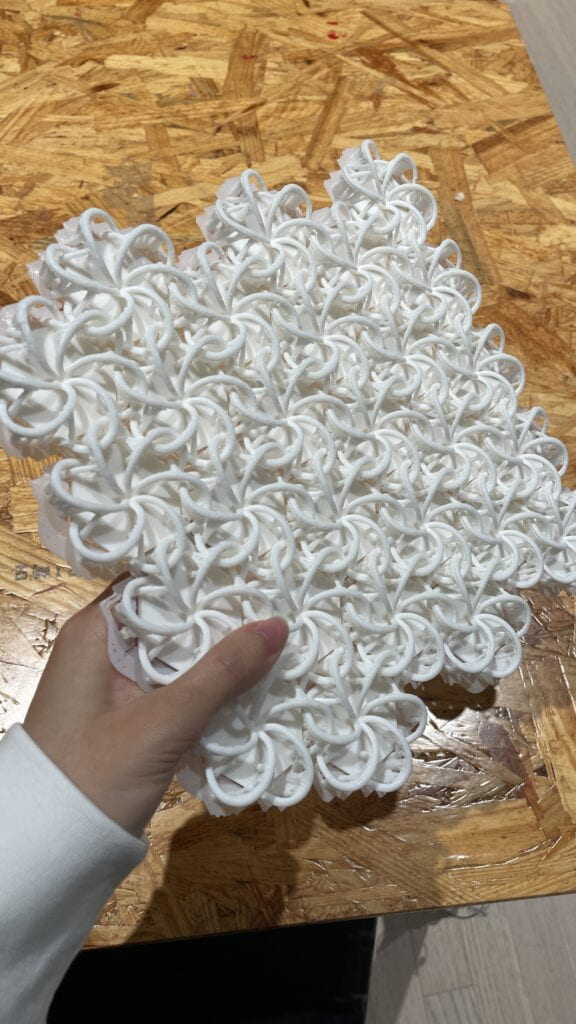
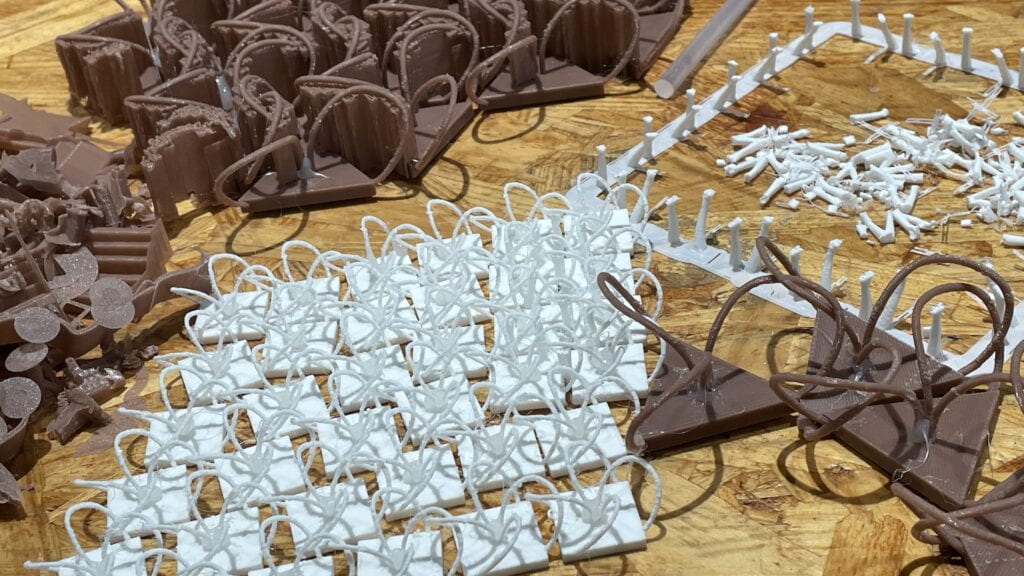
Design process
Why fabric: To be honest, starting from the third week, I became consistently troubled by insomnia. I can feel the long, dark nights slowly consuming all my energy. I can only muster what’s left to barely cope with the heavy workload of studies and work. At the same time, I locked myself because of my sadness and tiredness. Most of my connections with others were cut by myself.
During midterms, encouraged by my parents, I started seeking help from the outside world. I began sharing my worries with friends instead of silently internalizing them. We cried, hugged, and smiled together. My friends helped me a lot. I can feel that I’m getting back the bond with others. Last week my mom came to shanghai to see me. The bond between us binds us together. Their strength was transferred to me through the connection between us.
So, I decided to explore something about the power of connection. At first, I decided to create chains of various shapes to represent different relationships between people, whether they were strong and resilient or fragile. To demonstrate varying degrees of flexibility, I interconnected them to form a surface and decided to create a flexible plane.
The connection in such special way: Let’s welcome NASA with a hearty round of applause as they make their dazzling entrance!

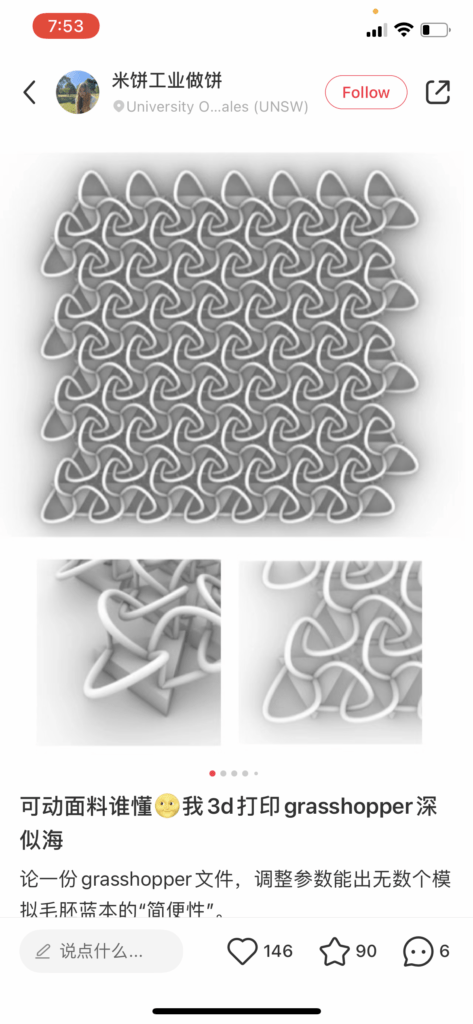
To avoid the overlapping issue, I remove the center circle. And I also refer to the one I found online to see how I can avoid such issue, from a poster online studying at UNSW.
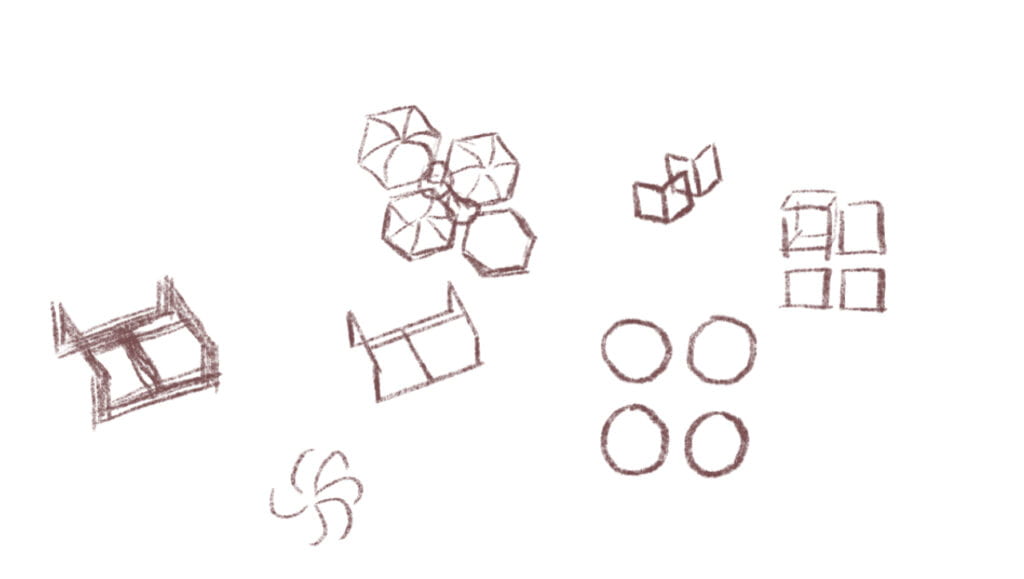
Iteration: After I finish the “coding” part, to be honest, the changes I need to make aren’t that big. Here are the parameters I can adjust to create a fabric “family”.
To better build connection with other pieces in this fabric (so that they can be connected to each other as a surface), I choose triangle, square, and hexagon (polygon with different numbers of sides).
For the parameters, I mainly used gene pool to control different variables.
sides: number slider–polygon’s segments
number of circles: gene pool–circles’ radius
coordinate Z value: gene pool–Construct point’s Z coordinate
rotate angle for each circle: gene pool–rotate 3D’s angle (degree)
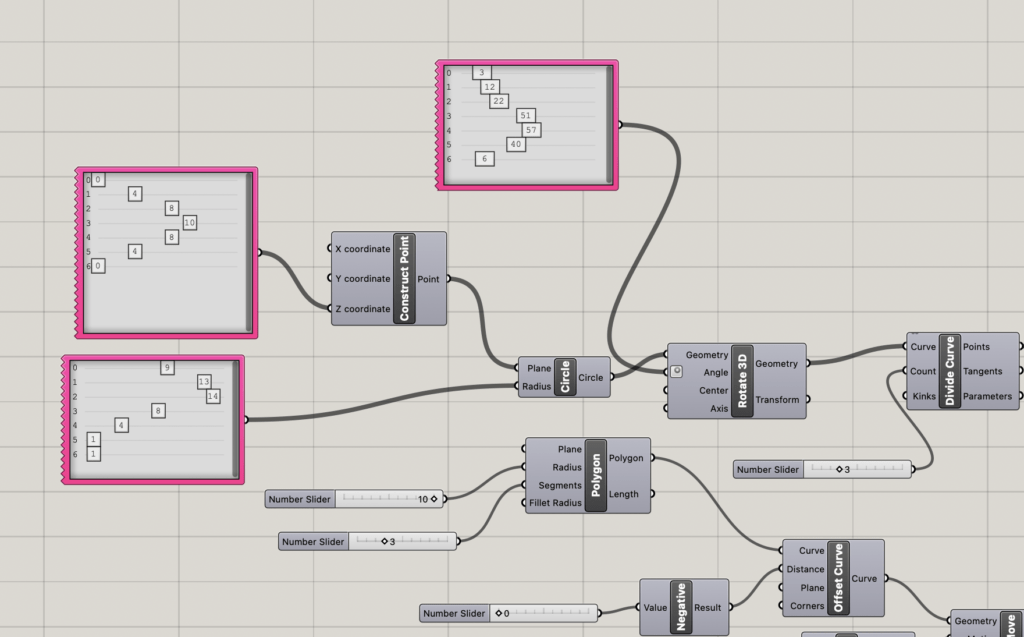
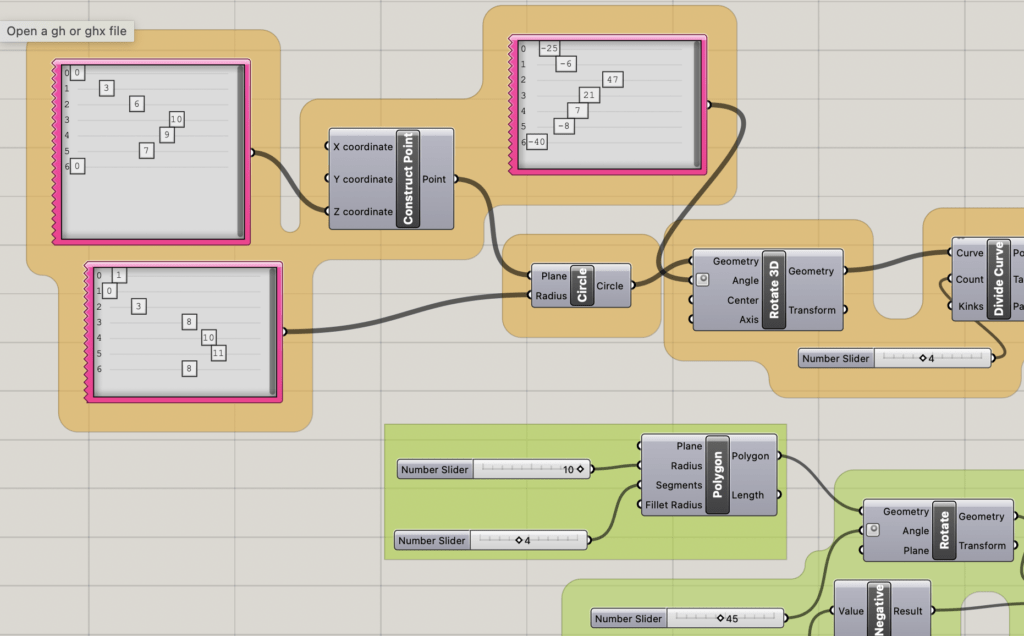
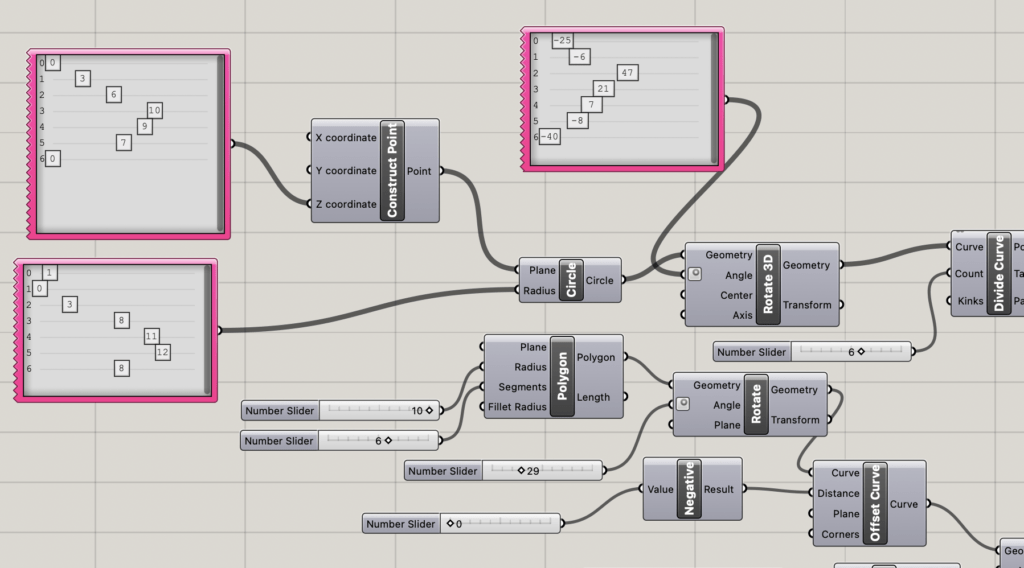
(cell arrangement)
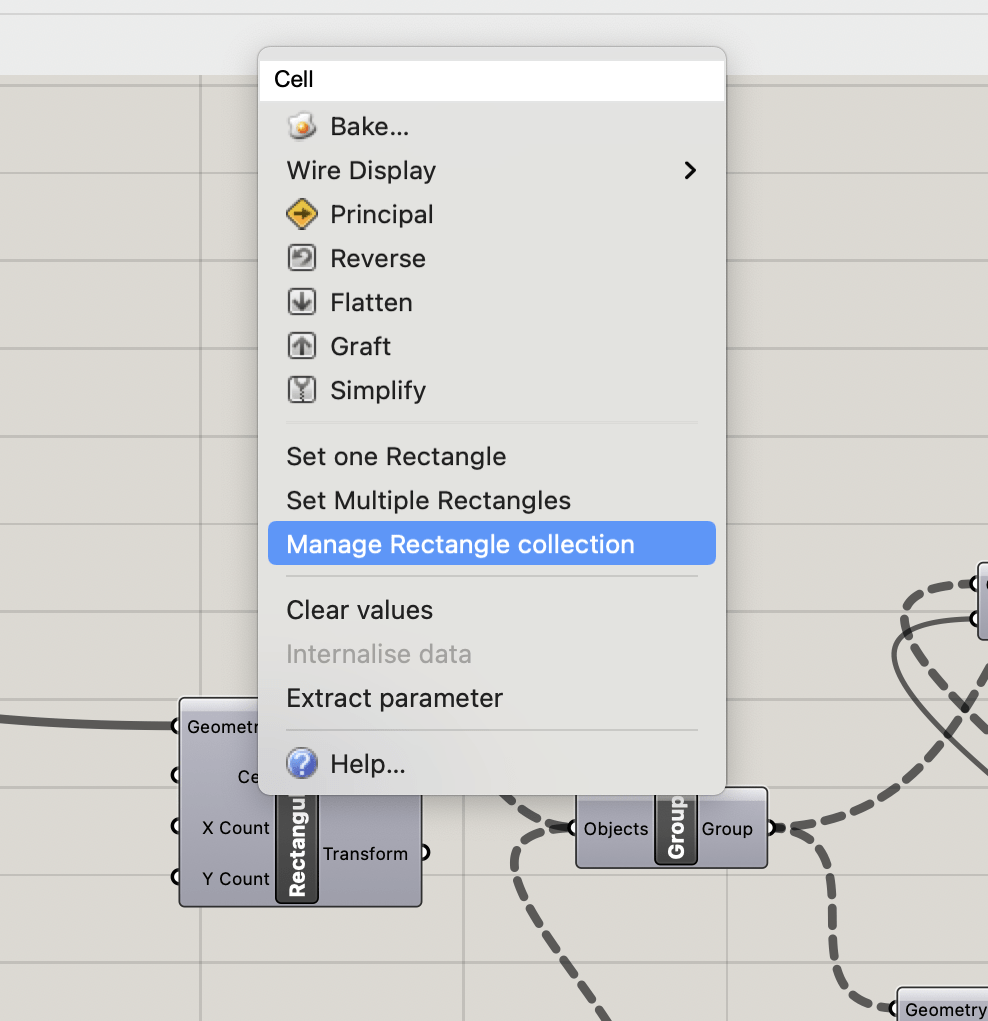
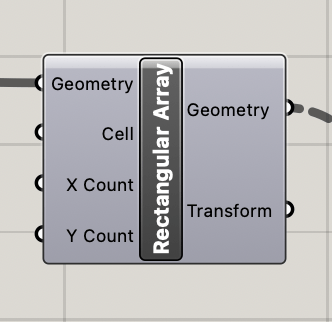
(size are mainly changed by Rhino) I did this to let the printer better print.
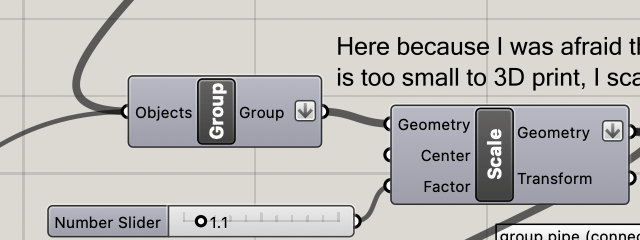
Things I’ve tried but didn’t work 🙁
- For the triangle one, I failed to build the connection for the whole surface. They turned out to be a chain, which means I forgot to connect the horizontal rows.
- At first, I had no confidence that I could create the Fabric Family, whether it was due to my modeling skills or our busy 3D bamboo printer. In fact, I was prepared to bring a computer pre-loaded with unsuccessful 3D models. Deciding sticking to fabric, I also tried other ways to present the concept of “connection” or “net”.
As these photos shown, if I place a nylon mesh on the model’s base after printing, the subsequently extruded material will connect with the base through the gaps in the nylon mesh. This way, we can use 3D printing technology to assemble various patterns on the fabric. And, for sure, the pattern should be composed by small piece so that the fabric maintains its softness.
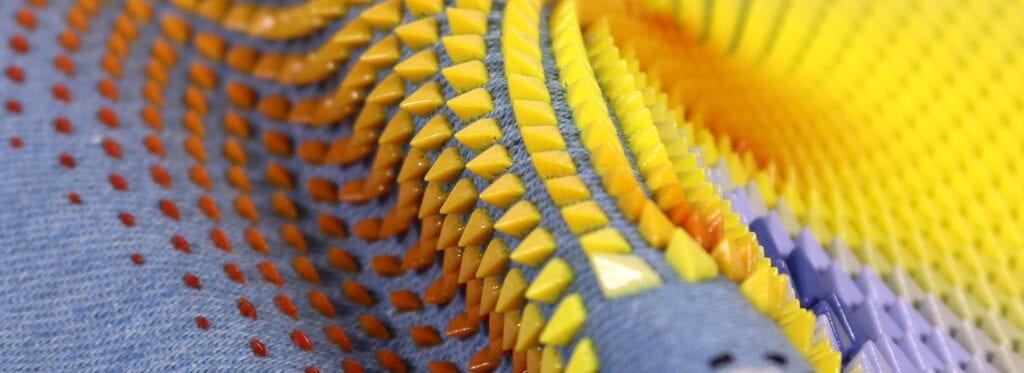
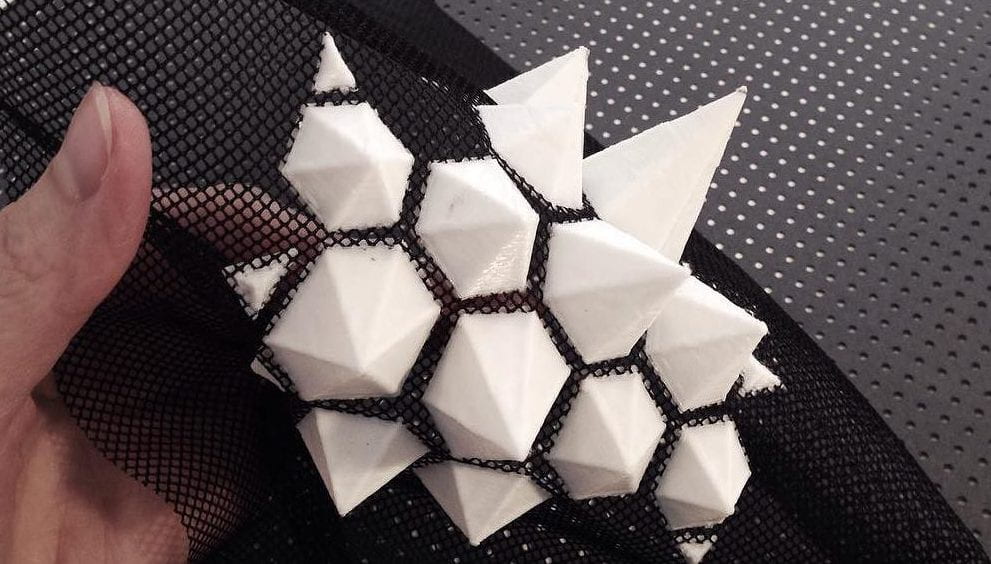
However, I failed to find a nylon mesh due to the time limit. I had to back to my initial idea. But I’ll definitely try this out one day.
Conclusion, value:
It was a great experience trying to print things with connections as a whole. It challenged my traditional thought, helping me realize than even with rigid plastic materials, we can create different soft pieces by adjusting the size, shape of the patterns, and the way pipes are connected. The harmony of strength and flexibility, the other side of things, is always waiting for us to discover.
For me, with the help of school and professors, 3D printing becomes more accessible. Compared to traditional clothing tailoring, 3D printing seems to lower the threshold for personalized customization. As long as you have a printer and a model, you can DIY your desired fabric or clothing. With the assistance of machines, we no longer need the mass production approach of the traditional fashion industry. This actually provides more clothing choices for people of different body types and reduces the marginalization of those who don’t fit the traditional clothing sizes and patterns.
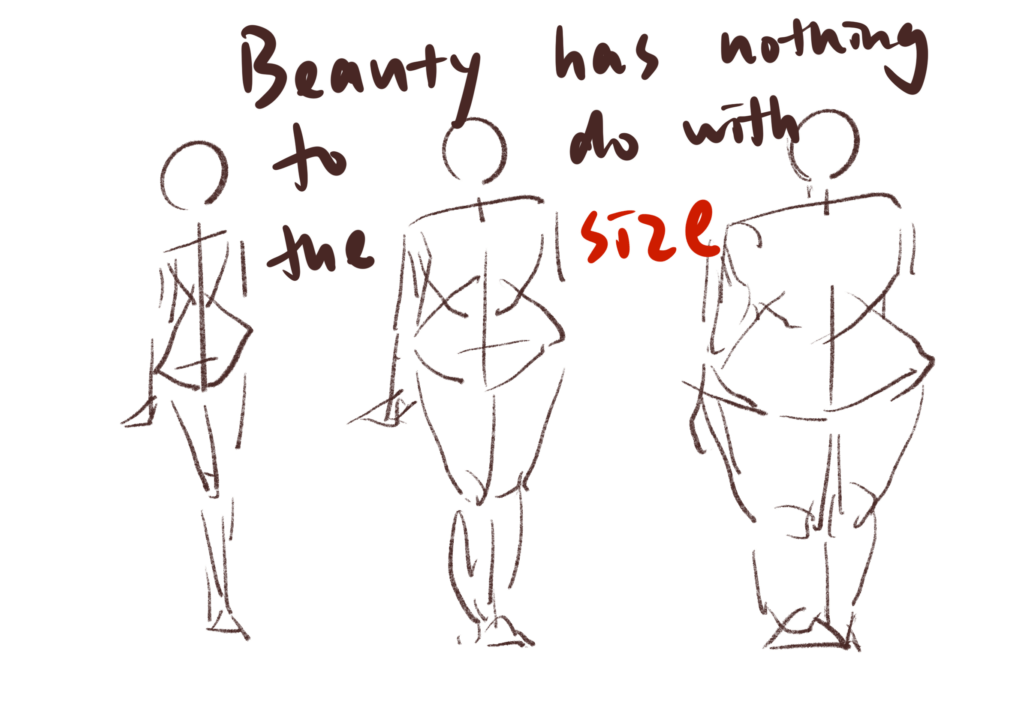
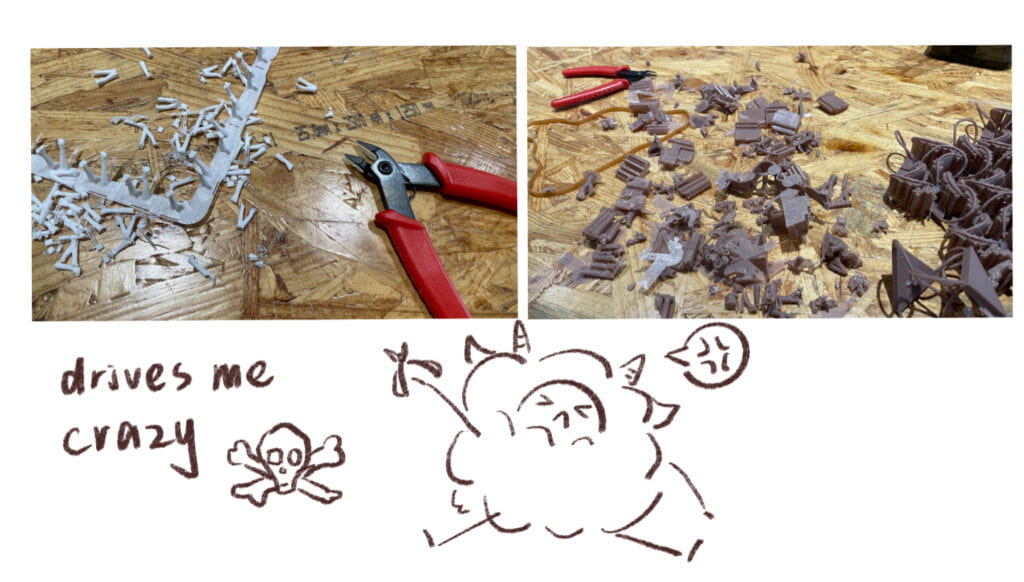
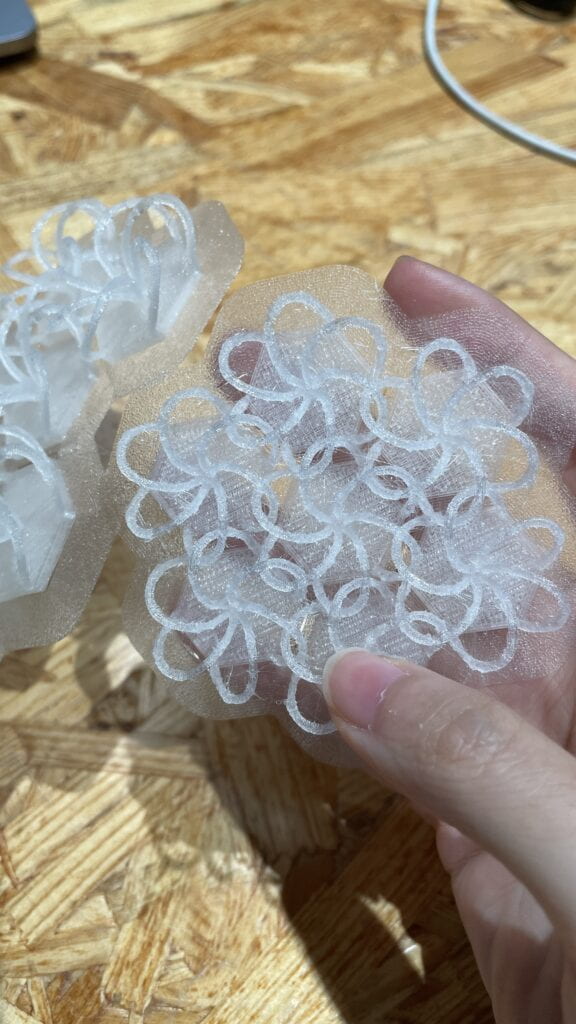
Better: On 11.1 when I found the one printed without support on my spot, I was completely shocked. It is because I spend my whole afternoon and night removing those support and it turned out that I actually don’t need to do so. But upon closer examination, this actually makes sense. My model doesn’t involve completely overhanging pipes parallel to the ground, which means that each layer can rely on the support from the layer below, eliminating the need for additional supports.
As fabric, it should be comfortable to wear. Maybe I should find a way to conceal those pipes, so that the skin in contact doesn’t feel these things are prickly.
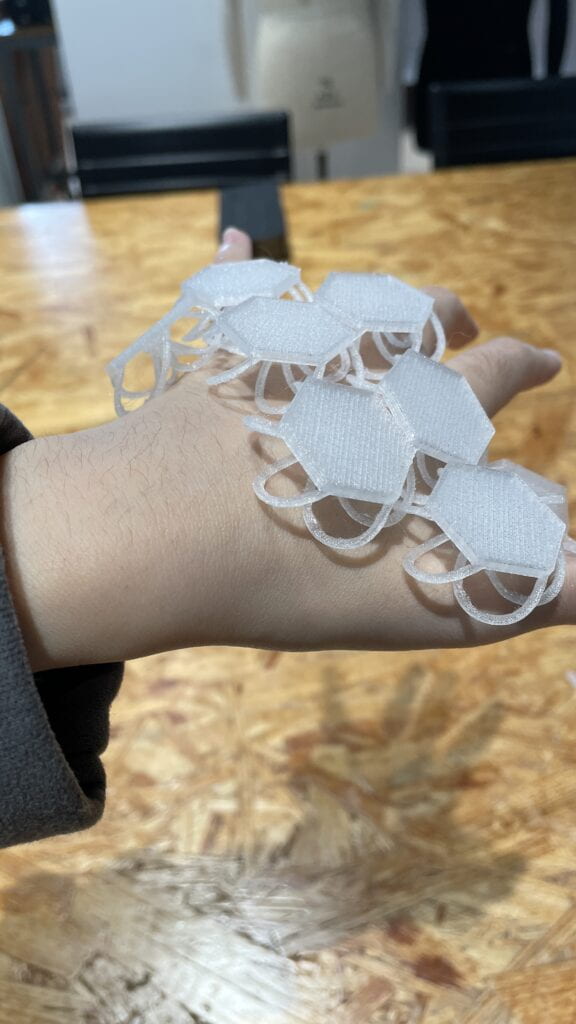
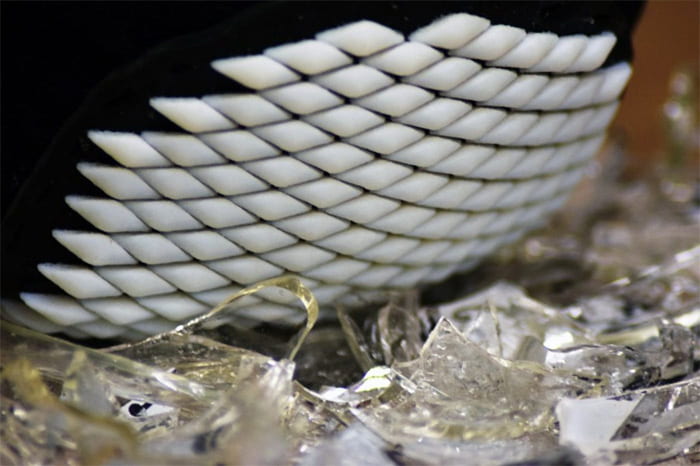
From an aesthetic perspective, we can add elements like scales to the patterns to enhance the fashion.
Of course, this is just one idea. Modern fabrics have numerous processing techniques, such as laser cutting, embossing, different texture treatments, and our 3D printing fabric can certainly integrate with these elements to create diversity.
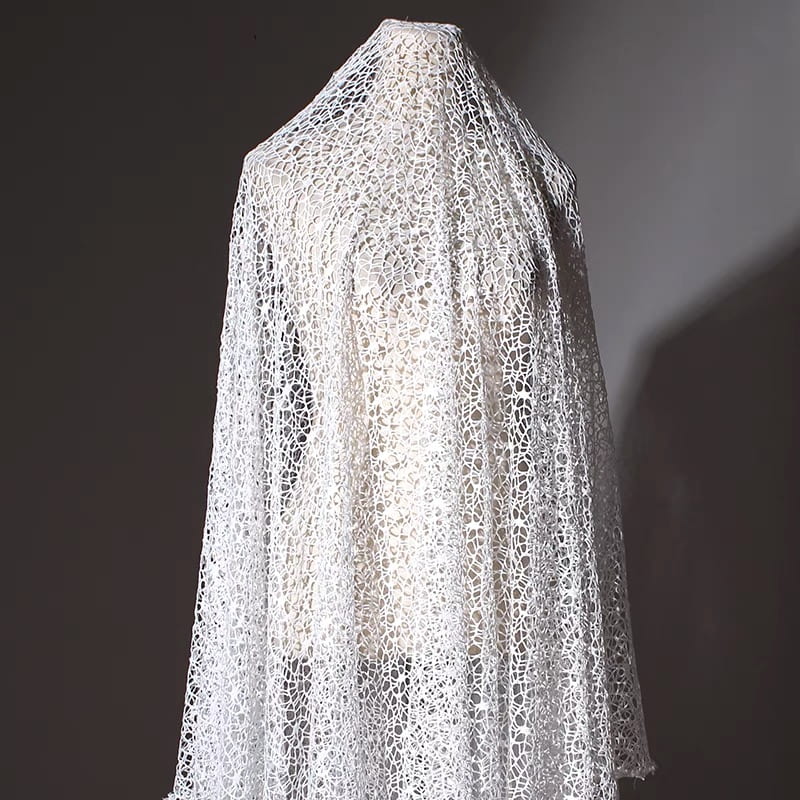
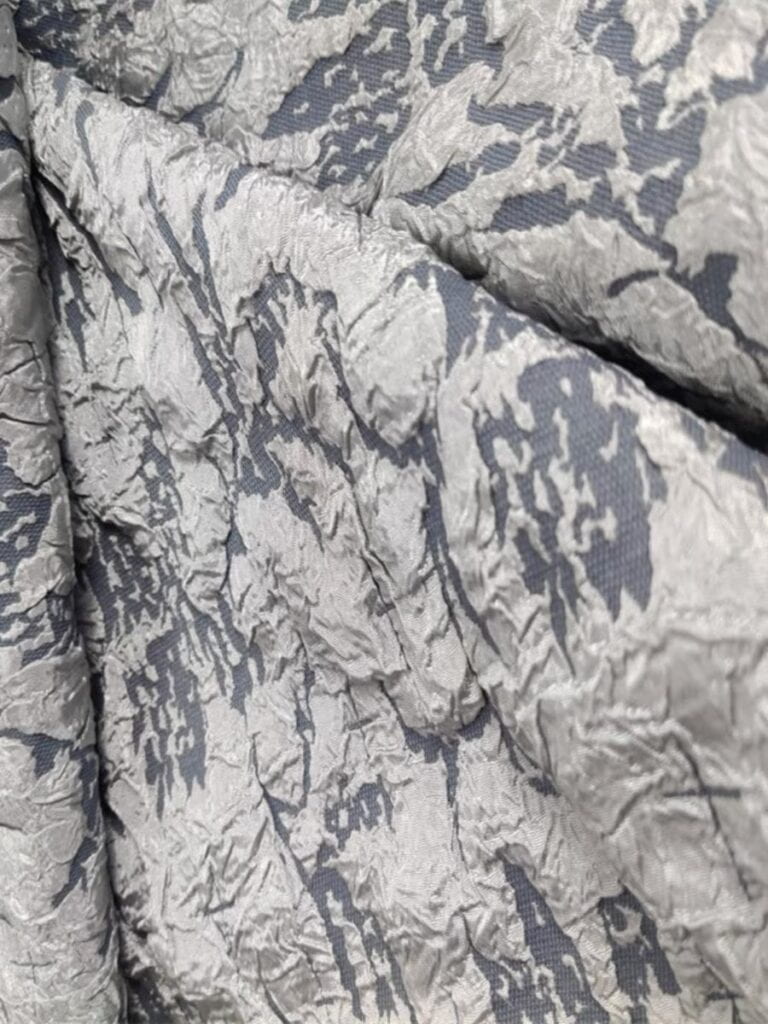
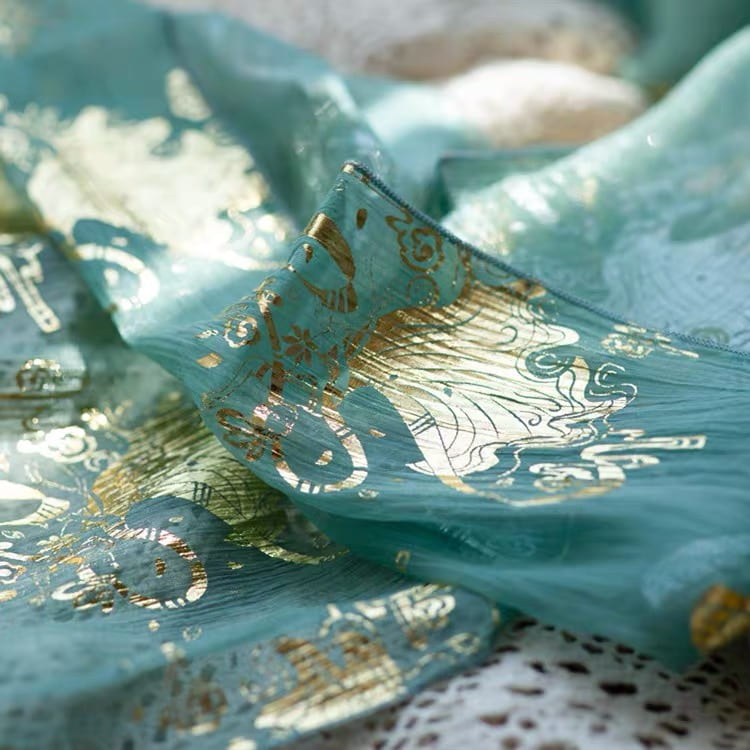
Technical process:
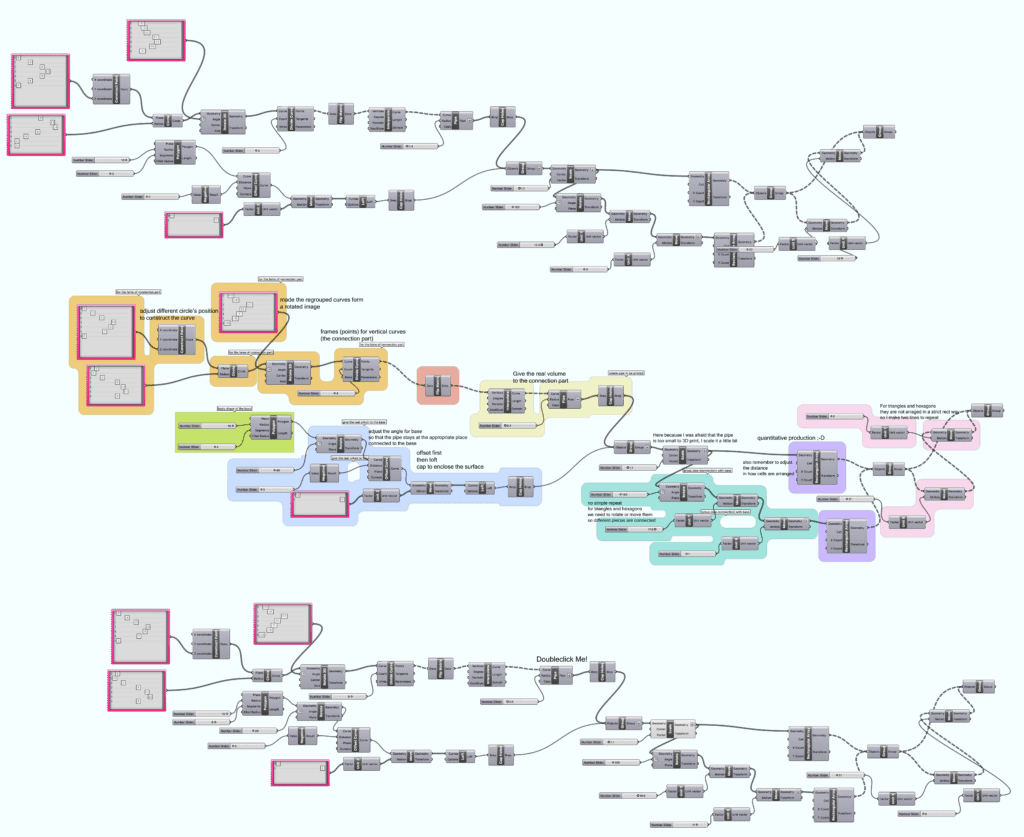
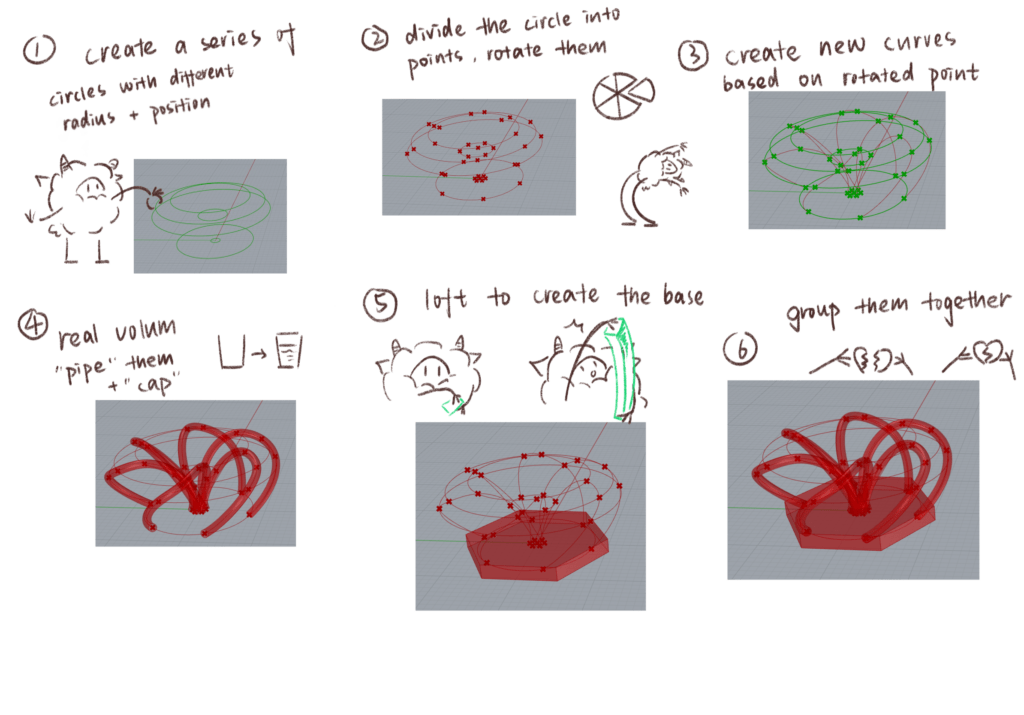
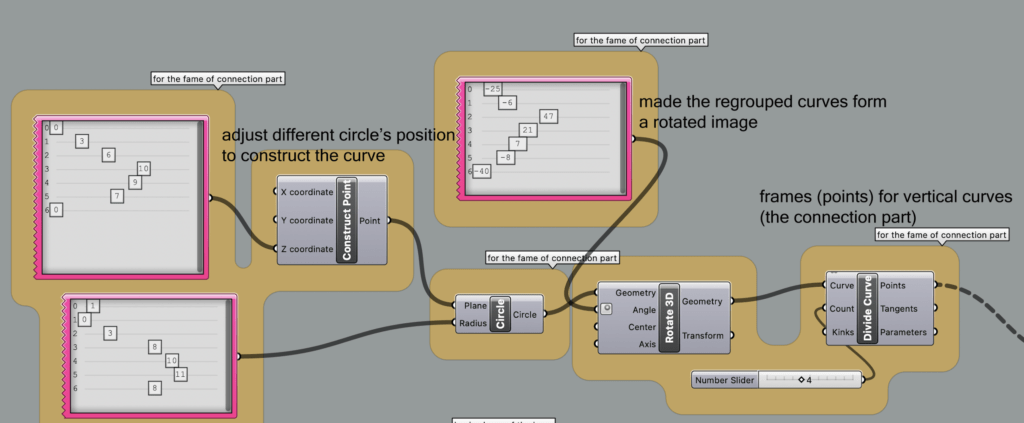
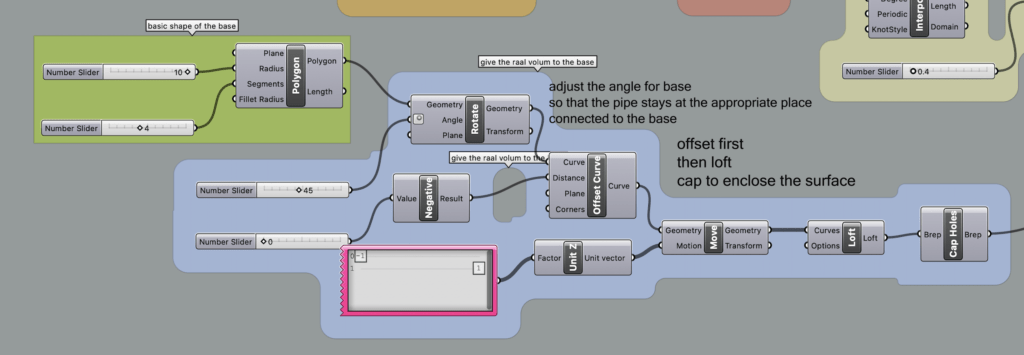
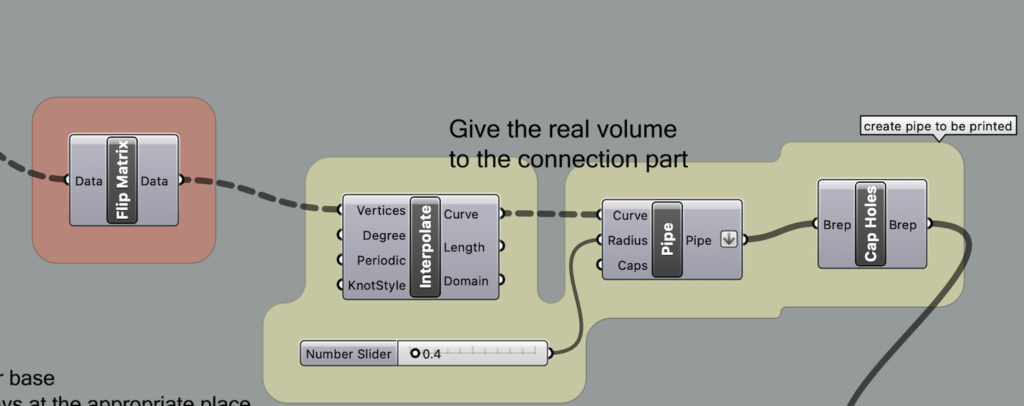
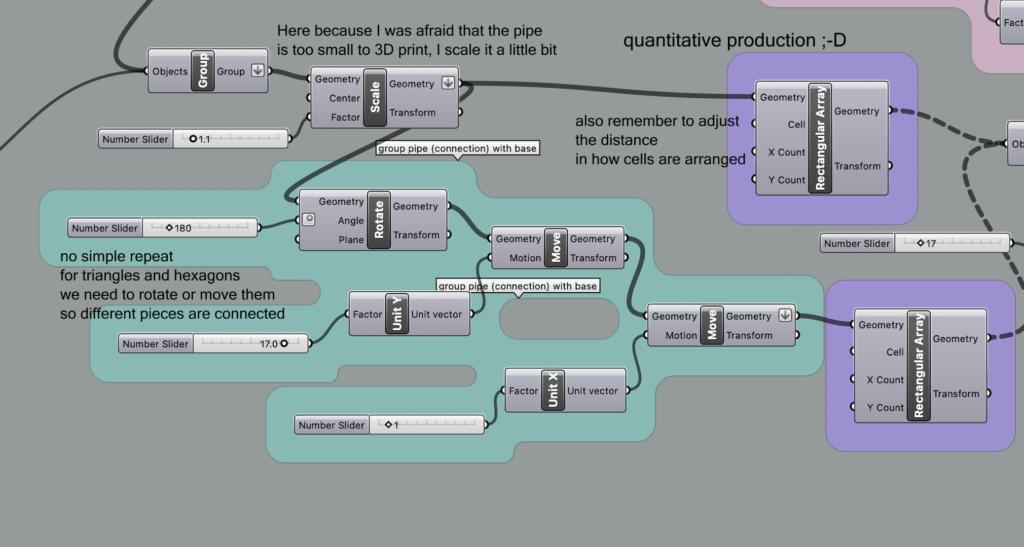
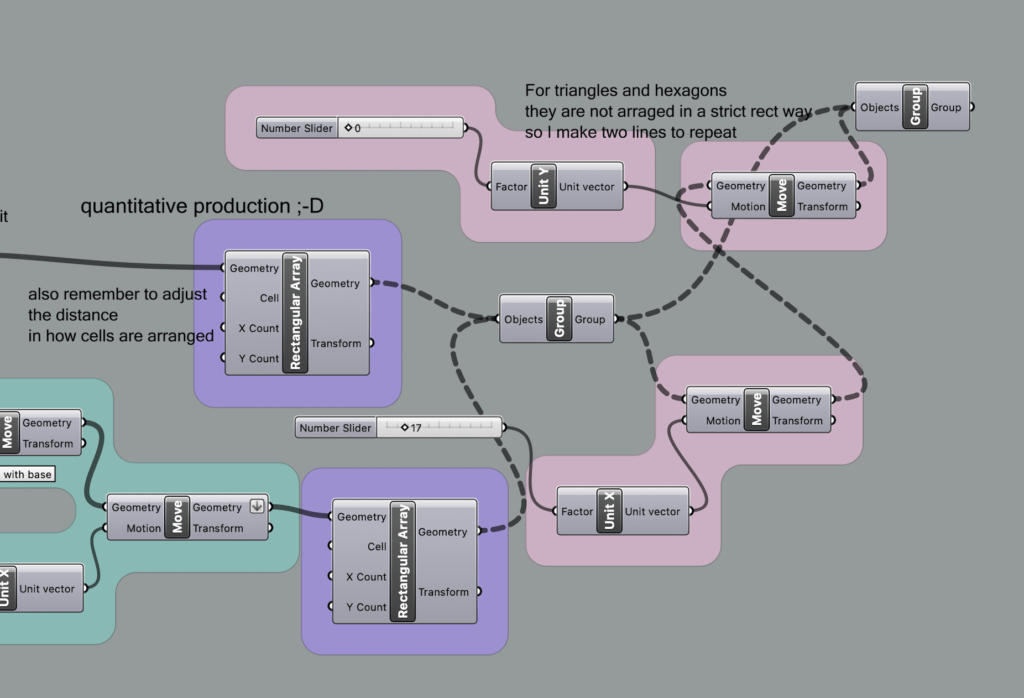
Technical challenge: About the overlapping issue: To make sure each part can move freely; I have to check from time to time whether two pipes overlap or touch with each other. It is annoying because I have to zoom in again and again. So, I’m wondering if there is a real physical engine in Grasshopper to help me verify if these connections are correct, giving them actual volume and gravity.
About the support: because of the reason mentioned bellow, I think I’ll try different types of connections without support to see how them can be perfectly printed.
Reflection:
Different materials for 3D printing could be used. As I searched online, Thermoplastic polyurethane (TPU) and true silicone are much better at flexibility and durability.
The shape of pipe can also be adjusted to reduce the gap between two patterns. Like what NASA has down, they make the space in the hollowed-out area smaller to restrict movement at the connections, ensuring that the two patterns fit closely together.
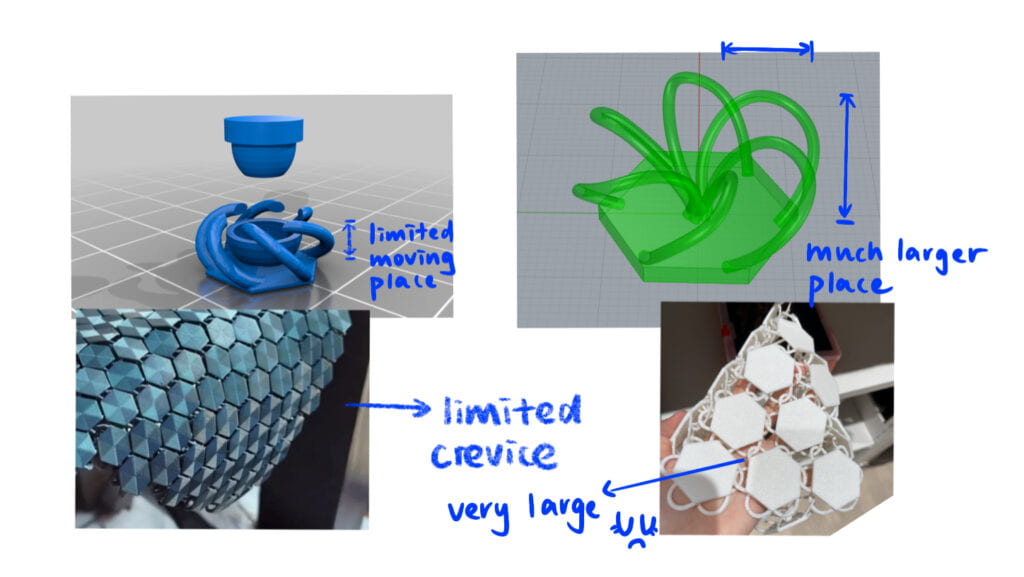
Future development:
We can try applying them in clothes or accessories. It is reported that the textile industry is the third-largest consumer of water in the world, due to the unsustainable need to continuously water cotton crops. It’s a large threat to the environment, and a solution is needed. Maybe 3D printing is the way to fix this. Since for my project, it could be very uncomfortable to wear them. Using TPU, researchers at MIT were able to create a flexible yet strong fabric that is “soft as skin”.
Also, while thinking about how 3D printing fabric can replace the traditional one, we can get unexpected surprise from 3D printing. University of Maryland are designing a heat-wicking material especially for sportswear. With 3D printing technology, we can try multiple structures of the fabric to see the practicality it brings to us.
Giving Credit:
3D printing fabric from NASA
https://www.thingiverse.com/thing:3095799
3D printing fabric: the most promising project
https://all3dp.com/2/3d-printed-fabric-most-promising-project/